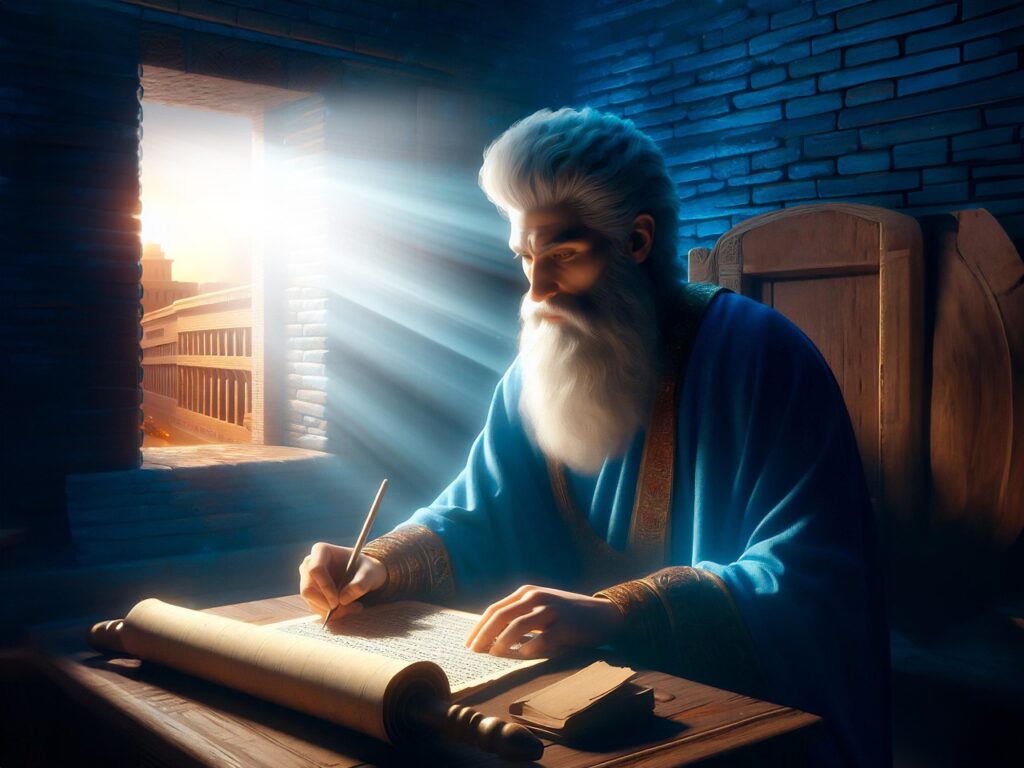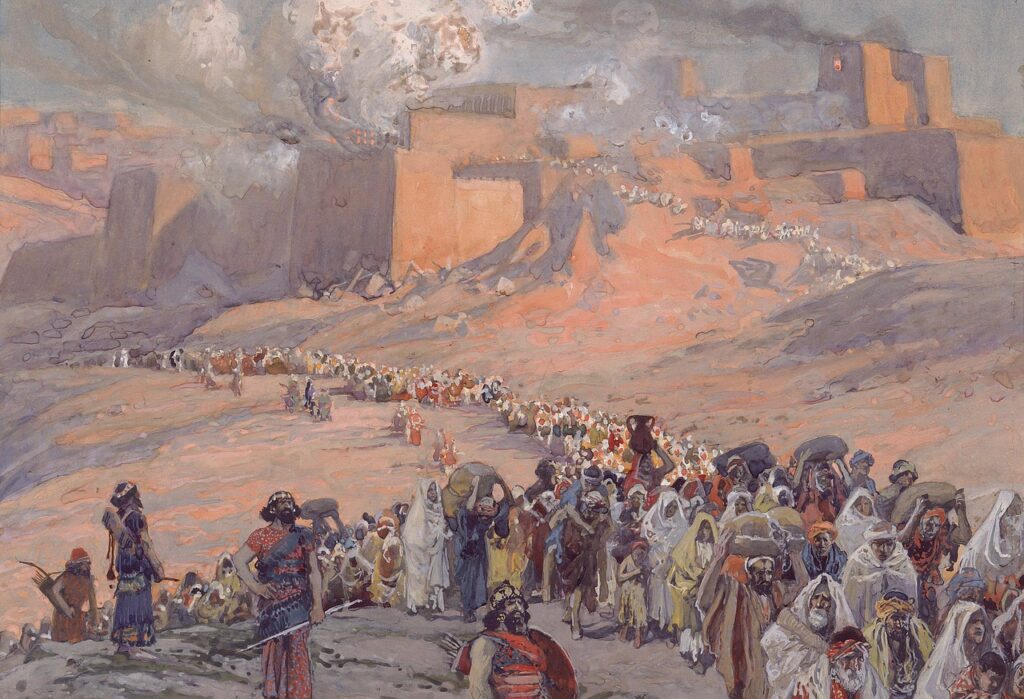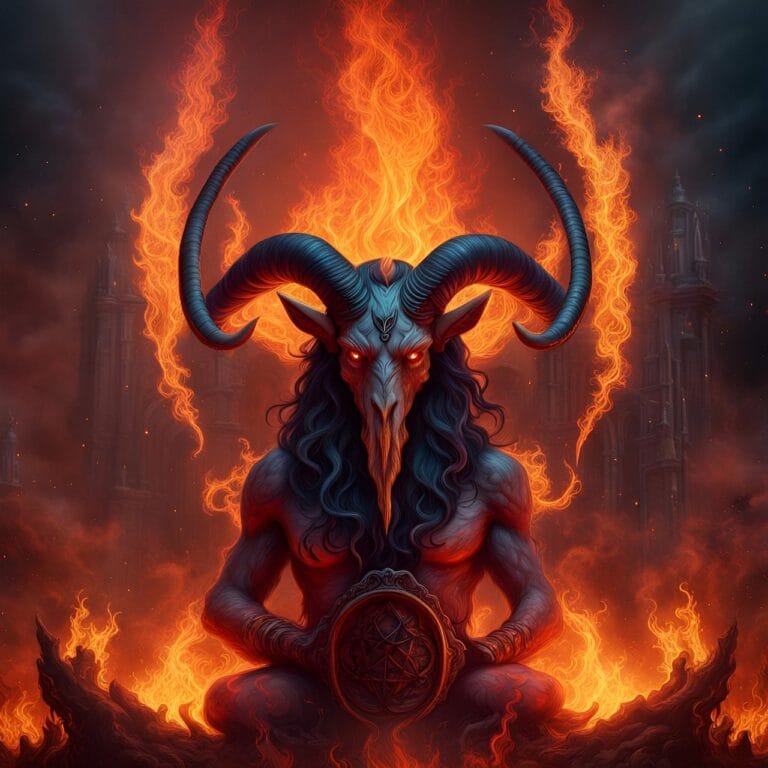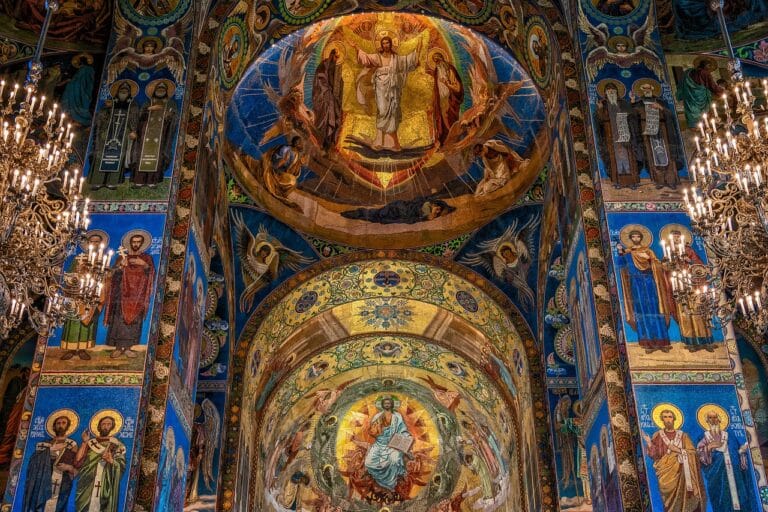
The Book of Daniel is a significant text in the Bible, rich in stories of faith, prophecy, and divine intervention. It recounts key events in the life of Daniel and his friends during their time in Babylonian exile. This article explores the timeline of these events and their theological implications.
The Historical Context of the Book of Daniel
The Book of Daniel is set in the context of the Babylonian exile, which began in 586 BC when the Babylonians conquered Jerusalem. During this tumultuous period, many Judeans were taken captive and transported to Babylon. The book itself is attributed to Daniel, a young man of noble lineage, who was among those exiled. He is portrayed as a wise and faithful servant of God, navigating the challenges of living in a foreign land.
The Babylonian empire was a dominant power at the time, known for its impressive architecture, advanced culture, and oppressive rule. The events in Daniel occur under the reign of several kings, including Nebuchadnezzar and Belshazzar. Understanding this historical backdrop is crucial for interpreting the narratives and prophecies contained within the text.
Daniel’s Early Life in Babylon

One of the first significant events in the Book of Daniel occurs when Daniel and his friends—Shadrach, Meshach, and Abednego—are taken to the Babylonian court. They are chosen for their intelligence and royal lineage, and they undergo a three-year training period to be prepared for service to King Nebuchadnezzar.
During this time, Daniel makes a crucial decision not to defile himself with the king’s food and wine, which he believes violates his dietary laws. Instead, he asks for vegetables and water, showcasing his commitment to his faith. This choice leads to a remarkable outcome, as Daniel and his friends appear healthier than those who consumed the royal provisions. This event emphasizes the importance of faithfulness to God, even in challenging circumstances.
The Dream of Nebuchadnezzar
A pivotal moment occurs when King Nebuchadnezzar has a troubling dream that he cannot interpret. In response to the king’s distress, Daniel seeks God’s guidance and receives the interpretation of the dream, which foretells the rise and fall of empires. The dream depicts a statue with different materials representing various kingdoms, culminating in the establishment of God’s eternal kingdom.
This event highlights Daniel’s role as a prophet and his reliance on God for wisdom. By revealing the king’s dream and its meaning, Daniel not only saves his life but also elevates the position of his friends within the court. This narrative illustrates the theme of divine sovereignty over human affairs, a central message throughout the Book of Daniel.
The Fiery Furnace

Another key event is the story of Shadrach, Meshach, and Abednego in the fiery furnace. After Nebuchadnezzar constructs a golden statue and commands everyone to worship it, these three young men refuse to bow down. As punishment, they are thrown into a blazing furnace.
Remarkably, they emerge unharmed, with a fourth figure seen walking with them in the flames, interpreted by many as a divine presence. This miraculous deliverance serves as a powerful testament to faith and courage in the face of persecution. It reaffirms the belief that God protects those who remain steadfast in their devotion.
The Writing on the Wall
As the narrative progresses, we encounter the story of Belshazzar, the last king of Babylon, who holds a feast using sacred vessels from the Jerusalem temple. During the feast, a mysterious hand writes a message on the wall, which no one can interpret. Once again, Daniel is called upon to provide the interpretation.
He reveals that the writing signifies the judgment of God against Belshazzar for his arrogance and sacrilege. The king’s reign is foretold to end that very night, and indeed, the Medes and Persians invade Babylon, marking the fall of the empire. This event underscores the theme of divine justice and the accountability of leaders before God.
Daniel in the Lion’s Den

In another well-known story, Daniel faces persecution when a decree is issued that forbids prayer to anyone except King Darius. Defying the order, Daniel continues to pray to God three times a day, leading to his arrest. As punishment, he is thrown into a den of lions.
Miraculously, God sends an angel to shut the lions’ mouths, and Daniel emerges unscathed the next morning. This event not only highlights Daniel’s unwavering faith but also serves as a reminder of God’s protective power. Following Daniel’s deliverance, King Darius issues a decree honoring the God of Daniel, showcasing the influence of Daniel’s faith on those in power.
The Prophecies of Daniel
Aside from the narratives, the Book of Daniel contains significant prophetic visions that have intrigued scholars and believers alike. Daniel receives visions about future kingdoms and the end times, including the famous “Seventy Weeks” prophecy. This prophecy outlines a timeline for the coming of an anointed one, which many Christians interpret as a reference to Jesus Christ.
These prophecies not only reveal God’s plan for humanity but also encourage believers to remain hopeful and faithful amid trials. They emphasize the importance of understanding the broader narrative of God’s redemptive work throughout history.
Conclusion
The Book of Daniel provides rich narratives and profound prophecies that resonate with believers today. Key events such as the fiery furnace, the writing on the wall, and Daniel in the lion’s den illustrate themes of faith, courage, and divine sovereignty.
The overarching message is that God is in control, even in the face of adversity. Daniel’s unwavering commitment to God serves as an inspiration for many, encouraging them to stand firm in their faith regardless of the circumstances. The prophetic visions point toward a future hope, reminding believers of God’s ultimate plan for redemption and restoration.
In a world often filled with uncertainty and challenges, the stories and teachings found in the Book of Daniel continue to inspire and guide individuals in their spiritual journeys, reinforcing the belief that faith can triumph over all earthly trials.
FAQs
1. What is the significance of Daniel’s refusal to eat the king’s food?
Daniel’s refusal to eat the king’s food signifies his commitment to his Jewish dietary laws and his faith in God. It highlights the importance of maintaining one’s beliefs even in a foreign culture and showcases God’s provision for those who remain faithful.
2. How does the Book of Daniel relate to the New Testament?
The Book of Daniel is often referenced in the New Testament, particularly in relation to prophecies about the Messiah. Many Christians see parallels between Daniel’s visions and the life and ministry of Jesus, particularly in terms of fulfillment and divine purpose.
3. What lessons can we learn from the story of the fiery furnace?
The story of the fiery furnace teaches us about the power of faith and the importance of standing up for one’s beliefs. It shows that God can deliver us from difficult situations and that faithfulness to Him can lead to divine protection.
4. Why is the writing on the wall significant?
The writing on the wall serves as a warning of divine judgment against King Belshazzar for his sacrilege. It emphasizes the accountability of leaders before God and illustrates that pride and arrogance will ultimately lead to downfall.
5. What is the “Seventy Weeks” prophecy about?
The “Seventy Weeks” prophecy in Daniel outlines a timeline for significant events, including the coming of an anointed one. This prophecy is often interpreted as foretelling the arrival of Jesus Christ and the establishment of God’s eternal kingdom.






